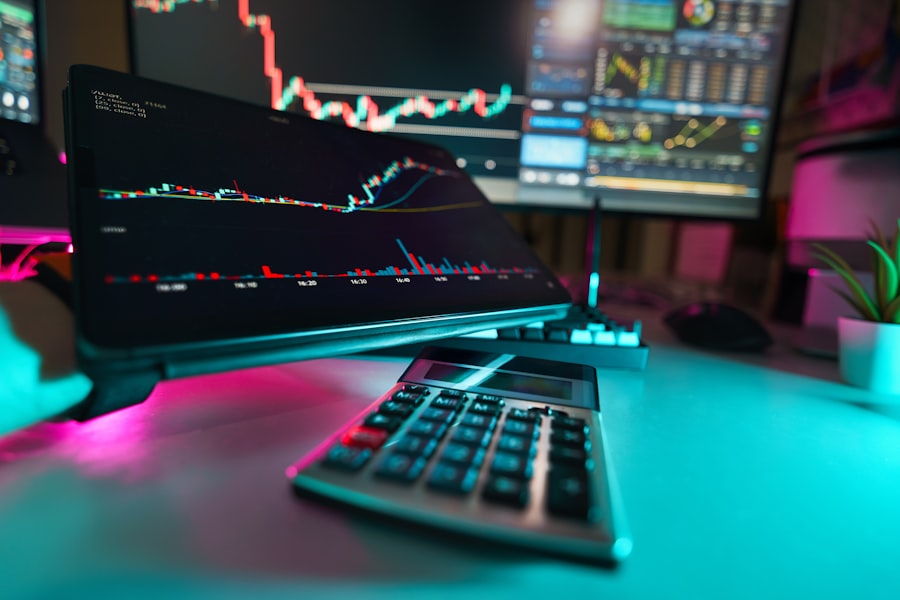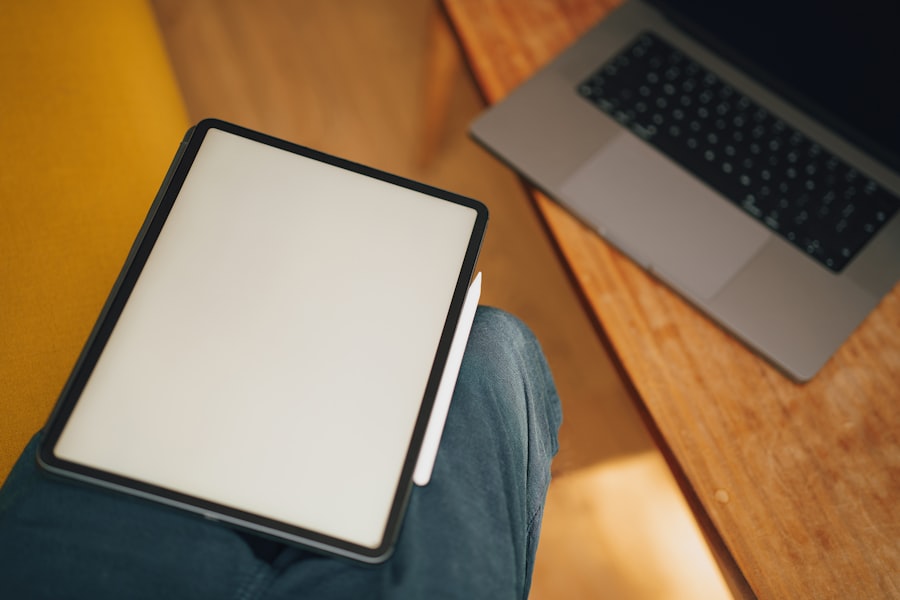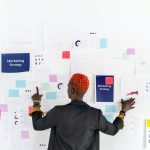Digital art and design represent a transformative shift in the way creativity is expressed and shared. At its core, digital art encompasses any artistic work created using digital technology, which can include illustrations, paintings, animations, and even 3D models. Unlike traditional art forms that rely on physical mediums such as paint or clay, digital art utilizes software and hardware tools to create visual content.
This shift has democratized art creation, allowing individuals with varying skill levels to explore their creativity without the constraints of traditional materials. The design aspect of digital art often focuses on the application of visual elements to communicate ideas effectively. Graphic design, for instance, merges art with functionality, emphasizing the importance of layout, typography, and color theory.
Understanding these foundational principles is crucial for anyone looking to delve into digital art and design. The interplay between aesthetics and usability is a key consideration; a well-designed piece not only captivates the viewer but also conveys a message or serves a specific purpose. As technology continues to evolve, so too do the tools and techniques available to artists and designers, making it essential to stay informed about the latest trends and innovations in the field.
Key Takeaways
- Digital art and design involves creating visual content using digital tools and techniques.
- There are many free digital art and design software options available for beginners to explore and use.
- Free online tutorials and courses can help beginners learn and improve their digital art and design skills.
- Finding free stock images and resources can help digital artists and designers enhance their work without breaking the bank.
- Engaging with digital art and design communities can provide valuable feedback, inspiration, and networking opportunities.
Exploring Free Digital Art and Design Software
The availability of free digital art and design software has significantly lowered the barriers to entry for aspiring artists and designers. Programs such as GIMP (GNU Image Manipulation Program) and Krita offer powerful features comparable to those found in premium software like Adobe Photoshop or Corel Painter. GIMP is particularly well-regarded for its extensive capabilities in photo editing and graphic design, providing users with tools for retouching images, creating complex compositions, and even designing user interfaces.
Krita, on the other hand, is tailored specifically for digital painting, boasting a user-friendly interface and a plethora of brushes and textures that cater to illustrators and concept artists. In addition to GIMP and Krita, there are other noteworthy free software options such as Inkscape for vector graphics and Blender for 3D modeling. Inkscape allows users to create scalable vector graphics (SVG), making it an excellent choice for logo design and illustrations that require resizing without loss of quality.
Blender stands out in the realm of 3D design, offering robust modeling, animation, and rendering capabilities. The open-source nature of these programs fosters a community-driven approach to development, ensuring that users can access a wealth of plugins and extensions that enhance functionality. By exploring these free tools, artists can experiment with different styles and techniques without the financial burden of purchasing expensive software.
Utilizing Free Online Tutorials and Courses

The internet is a treasure trove of resources for those eager to learn digital art and design. Numerous platforms offer free tutorials and courses that cater to various skill levels, from beginners to advanced practitioners. Websites like YouTube host countless channels dedicated to teaching digital art techniques, covering everything from basic drawing skills to complex animation processes.
Channels such as Proko provide in-depth lessons on figure drawing and anatomy, while others focus on specific software tutorials, helping users navigate tools like Photoshop or Illustrator effectively. In addition to video tutorials, platforms like Coursera and Skillshare offer free courses on digital art and design topics. These courses often include structured lessons, assignments, and community feedback, providing a more comprehensive learning experience.
For instance, a course on graphic design fundamentals might cover color theory, typography, and layout principles while encouraging students to apply their knowledge through practical projects. Engaging with these resources not only enhances technical skills but also fosters a sense of community among learners who share similar interests in digital creativity.
Finding Free Stock Images and Resources
In the realm of digital art and design, access to high-quality stock images can significantly enhance the creative process. Fortunately, there are numerous websites that offer free stock images, vectors, and textures that artists can incorporate into their projects. Platforms like Unsplash and Pexels provide a vast library of high-resolution photographs contributed by talented photographers worldwide.
These images can serve as inspiration or be used directly in designs without the worry of copyright infringement. Additionally, websites such as Pixabay and Freepik offer not only photos but also illustrations and vector graphics that can be utilized in various design projects. Freepik is particularly valuable for graphic designers seeking customizable templates for presentations or social media graphics.
The ability to access these resources without cost allows artists to experiment with different styles and concepts without the financial constraints typically associated with purchasing stock imagery. By leveraging these free resources, creators can elevate their work while adhering to ethical practices in sourcing visual content.
Learning from Digital Art and Design Communities
Engaging with digital art and design communities can be an invaluable aspect of an artist’s growth journey. Online platforms such as DeviantArt, ArtStation, and Behance provide spaces where artists can showcase their work, receive feedback, and connect with peers. These communities foster collaboration and inspiration by allowing members to share techniques, participate in challenges, or simply admire each other’s creations.
For instance, DeviantArt hosts various contests that encourage artists to push their boundaries while gaining exposure within the community. Social media platforms like Instagram and Twitter also play a significant role in connecting artists with one another.
Hashtags such as #digitalart or #graphicdesign can lead users to discover new artists or trends within the field.
Participating in online discussions or joining groups dedicated to specific aspects of digital art can further enhance learning opportunities. By immersing themselves in these communities, artists not only gain insights into industry standards but also build relationships that may lead to collaborative projects or mentorship opportunities.
Understanding Copyright and Licensing

Understanding Copyright Law
Copyright law is a fundamental concept that artists must grasp to protect their work. It grants creators exclusive rights to reproduce, distribute, and display their creations, providing a foundation for artists to control how their work is used.
Licensing and Sharing Artwork
Licensing is another critical aspect that artists must consider when sharing their work online. Many creators choose to license their artwork under specific terms that dictate how others can use it. Creative Commons licenses offer a flexible way for artists to share their work while retaining certain rights.
Empowering Artists Through Legal Frameworks
For example, an artist may allow others to use their artwork for non-commercial purposes while requiring attribution. Understanding these legal frameworks empowers artists to protect their work while also exploring opportunities for collaboration or commercial use. By grasping these concepts, artists can confidently share their work and navigate the digital art landscape with ease.
Protecting and Exploring Opportunities
Ultimately, having a solid understanding of copyright and licensing enables artists to make informed decisions about their work, protecting their creations while also exploring new opportunities for growth and collaboration.
Creating a Portfolio and Showcasing Your Work
A well-curated portfolio is essential for any digital artist or designer looking to establish their presence in the industry. A portfolio serves as a visual resume that showcases an artist’s skills, style, and versatility. When creating a portfolio, it is crucial to select pieces that not only highlight technical proficiency but also reflect personal artistic vision.
Including a variety of work—such as illustrations, graphic designs, or animations—can demonstrate adaptability and attract a broader audience. In today’s digital age, online portfolios have become increasingly popular due to their accessibility and ease of sharing. Platforms like Behance or Adobe Portfolio allow artists to create visually appealing online galleries that can be easily linked or shared with potential clients or collaborators.
Additionally, maintaining an active presence on social media platforms can further enhance visibility; sharing progress shots or behind-the-scenes content can engage followers while showcasing the artist’s creative process. By thoughtfully curating their portfolios and utilizing online platforms effectively, artists can position themselves for success in a competitive landscape.
Networking and Collaborating with Other Digital Artists and Designers
Networking is a vital component of building a successful career in digital art and design. Establishing connections with other artists can lead to collaborative projects that enrich one’s creative practice while expanding professional opportunities. Attending industry events such as conventions or workshops provides valuable face-to-face interactions that can foster lasting relationships within the community.
These gatherings often feature panel discussions or demonstrations from established professionals who share insights into their creative processes. Online networking has also become increasingly important in recent years.
Platforms like LinkedIn allow artists to connect with industry professionals while showcasing their work through profiles that highlight skills and experiences.
Engaging with others through comments or direct messages can lead to fruitful collaborations or mentorship opportunities. Additionally, participating in online challenges or group projects can help artists build camaraderie while honing their skills alongside peers who share similar passions. By actively seeking out networking opportunities—both online and offline—digital artists can cultivate relationships that contribute significantly to their growth within the field.
FAQs
What is digital art and design?
Digital art and design refers to creating visual artwork or graphic designs using digital tools such as computer software, drawing tablets, and digital cameras. It encompasses a wide range of artistic styles and techniques, including illustration, photo manipulation, graphic design, and 3D modeling.
What are some free resources for digital art and design?
There are several free resources available for digital art and design, including software such as GIMP, Krita, and Inkscape for image editing and graphic design, as well as online platforms like Canva and Pixlr for creating designs and illustrations. Additionally, websites like Unsplash and Pexels offer free high-quality stock photos for use in digital artwork.
How can I get started with digital art and design using free resources?
To get started with digital art and design using free resources, you can begin by exploring different software and online platforms to find the ones that best suit your needs and artistic style. You can then take advantage of tutorials and resources available online to learn how to use these tools effectively and develop your skills in digital art and design.
What are some tips for beginners in digital art and design?
For beginners in digital art and design, it’s important to start by familiarizing yourself with the basic tools and techniques of the software or platform you choose to use. Additionally, practicing regularly and seeking feedback from other artists can help you improve your skills. It’s also beneficial to study and draw inspiration from the work of established artists in the field.






